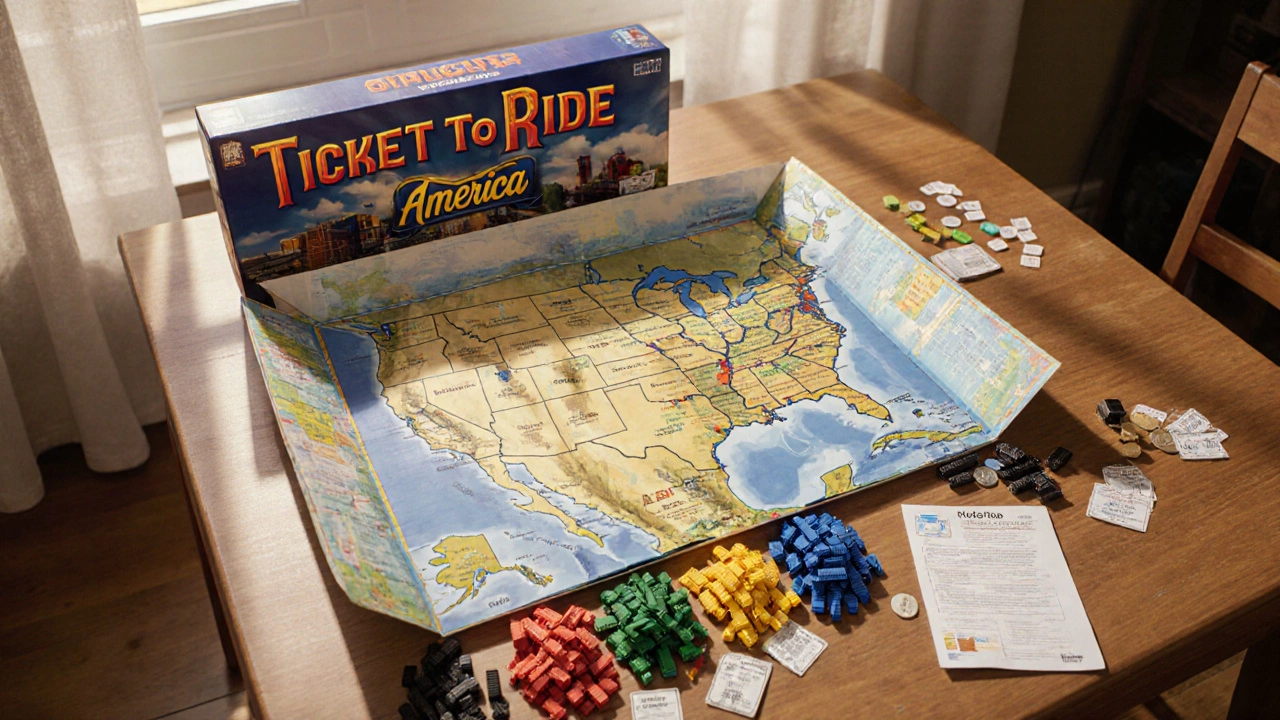
Learn the exact number of train cars in Ticket to Ride America, per player and total for five players, plus storage tips and edition comparisons.
When you pick up Ticket to Ride America trains, the network of U.S. rail lines represented in the Ticket to Ride board game. Also known as America map routes, it lets players travel coast‑to‑coast using a simplified but recognizable version of the country’s rail system. The board’s cities map directly onto historic corridors, so knowing the real routes helps you plan smarter and win more often. This guide shows how the game mirrors actual rail travel, why that matters, and which real‑world resources can boost your play.
The central idea is simple: Ticket to Ride America trains are drawn from the actual routes that Amtrak, the national passenger railroad service operates today. When you connect New York to Los Angeles on the board, you’re echoing the long‑distance service that runs the California Zephyr and Southwest Chief. Understanding that Amtrak’s network includes both high‑traffic corridors and remote mountain passes gives you an edge—some routes are cheaper in the game because they reflect less‑used tracks in real life. This link between board and railroad also explains why certain city pairs are worth fighting over; they correspond to busy hubs like Chicago, which serves as a major interchange for many real trains.
Beyond Amtrak, the game touches on niche services like luxury sleeper trains, premium long‑distance services with private cabins and upscale amenities. While the board doesn’t show cabin classes, the routes that host luxury sleepers—such as the Sunset Limited or the Coast Starlight—often appear as high‑value connections. Knowing which lines offer these premium experiences can guide you to claim longer routes early, mimicking the real‑world appeal of comfortable overnight travel.
Another layer comes from senior train travel, discounted and accessible rail options for older passengers. Many Amtrak routes provide reduced fares and wheelchair‑friendly cars, which the game mirrors with lower point costs on certain segments. If you’re familiar with senior discounts, you’ll spot cheaper routes that still connect key cities. That awareness can shape a strategy focused on high‑score efficiency, just like seniors plan budget‑friendly trips across the country.
All these entities—Amtrak’s core network, luxury sleepers, and senior travel benefits—form a web of relationships that the game simplifies but never fully hides. In semantic terms, we can say: "Ticket to Ride America trains encompasses historic corridors," "The game requires knowledge of Amtrak’s schedule to optimize routes," and "Luxury sleeper trains influence point values for long connections." Recognizing these ties helps you play with a deeper appreciation of the U.S. rail landscape.
Below you’ll find a curated set of articles that dive into the best routes for tourists, cost‑saving tricks for sleeper trips, safety tips for senior travelers, and comparisons between budget and luxury train experiences. Each piece builds on the core ideas introduced here, giving you practical advice you can apply both on the board and when you actually hop on a train across America.

Learn the exact number of train cars in Ticket to Ride America, per player and total for five players, plus storage tips and edition comparisons.